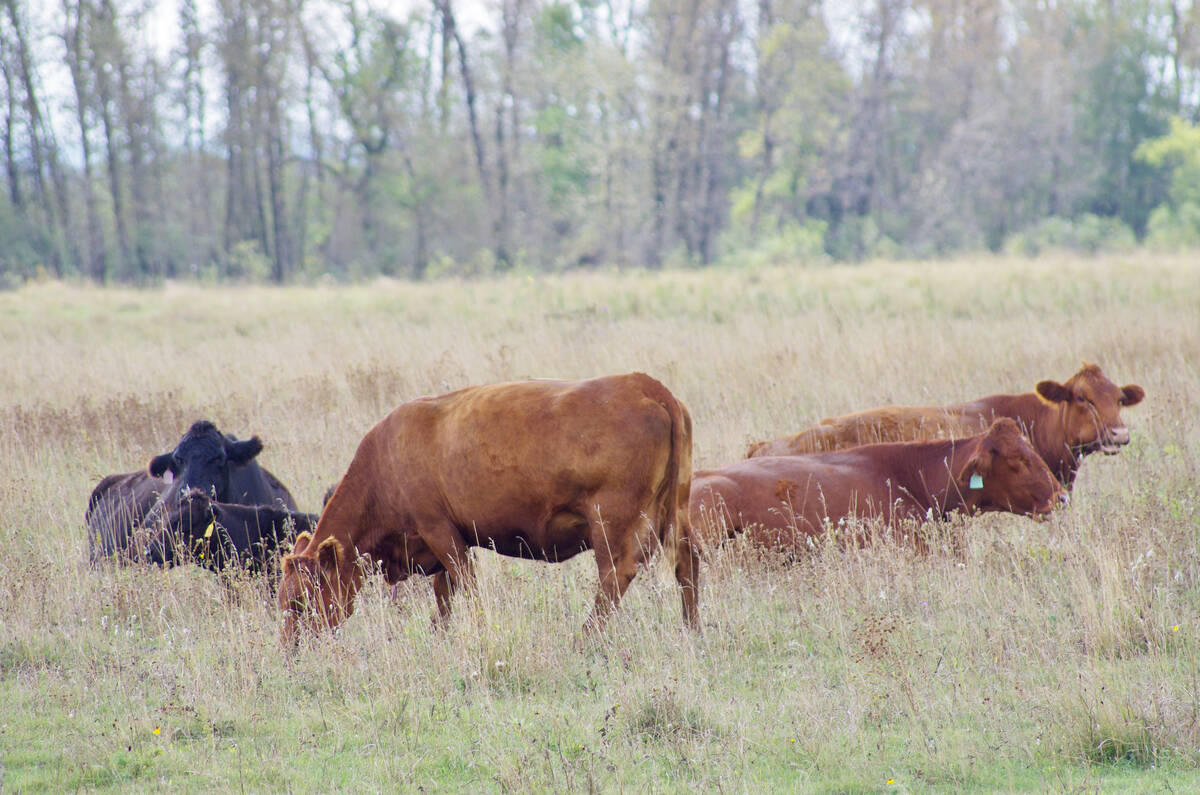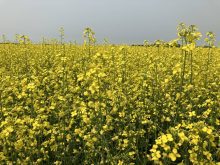Winnipeg | Reuters — Canola crops are rising across the Prairies like bad haircuts, reflecting multiple plantings and growth stages during a spring of frost and dry conditions.
The most uneven canola crop in roughly a decade, according to provincial oilseed specialist Murray Hartman at Lacombe, Alta., points to lower yields in the world’s top canola producer and exporter. The yellow-flowering rapeseed cousin produces vegetable oil for McDonald’s and potato chip maker Frito-Lay.
At Jeff Wiest’s farm near Enchant, Alta., severely dry soil has left bare as much as 40 acres, six weeks after he planted seed. Next to the dead zone is canola that has started to grow, and some plants at the advanced flowering stage.
Read Also

U.S. livestock: Chicago cattle futures climb on post-Thanksgiving trade
Chicago | Reuters – Chicago Mercantile Exchange’s live and feeder cattle futures ticked up on Friday in a day of…
On another field, canola is trying to shake off a pummeling by hail.
“It’s going to be all over the board this year,” Wiest said.
The U.S. Department of Agriculture forecasts a 4.5 per cent dip in 2015-16 global rapeseed/canola production to 68.5 million tonnes, including declines in Canada, China and the European Union.
Much of Saskatchewan and Alberta received less than 40 per cent of usual moisture in the month to June 18, according to Agriculture and Agri-Food Canada.
Weekend showers made minor improvements in soil moisture levels but drier weather this week will add to concerns, meteorologist Don Keeney of MDA Information Systems said Monday.
The next-biggest canola threat was May frosts, which forced farmers to reseed in parts of Manitoba and Saskatchewan.
Patchy crops mean higher costs and head-scratching decisions.
Farmers kill weeds with chemicals before crops get too mature. Some may now need to make more than one application, Hartman said.
At harvest, farmers may be forced to sacrifice some of the late- or early-maturing crop. Harvesting when the most advanced crop is ripe would also gather green seeds from late-developing plants.
Waiting for straggling plants to ripen before harvesting risks shattering over-ripe seed pods, Hartman said.
Instead of straight-cutting fields, a process in which farmers cut and gather canola simultaneously, they will likely have to use the traditional and more fuel-consuming method of cutting and gathering in separate operations, he said.
Lee Fortin, 38, who farms near Moose Jaw, Sask., has never faced such a disparity in crop growth. On one 240-acre field, only 10 per cent of his canola has poked through the soil.
“Everything’s starving for moisture,” he said. “It looks like a big disappointment.”
— Rod Nickel is a Reuters correspondent covering the ag and mining sectors for Reuters from Winnipeg. Additional reporting for Reuters by Julie Ingwersen in Chicago.














